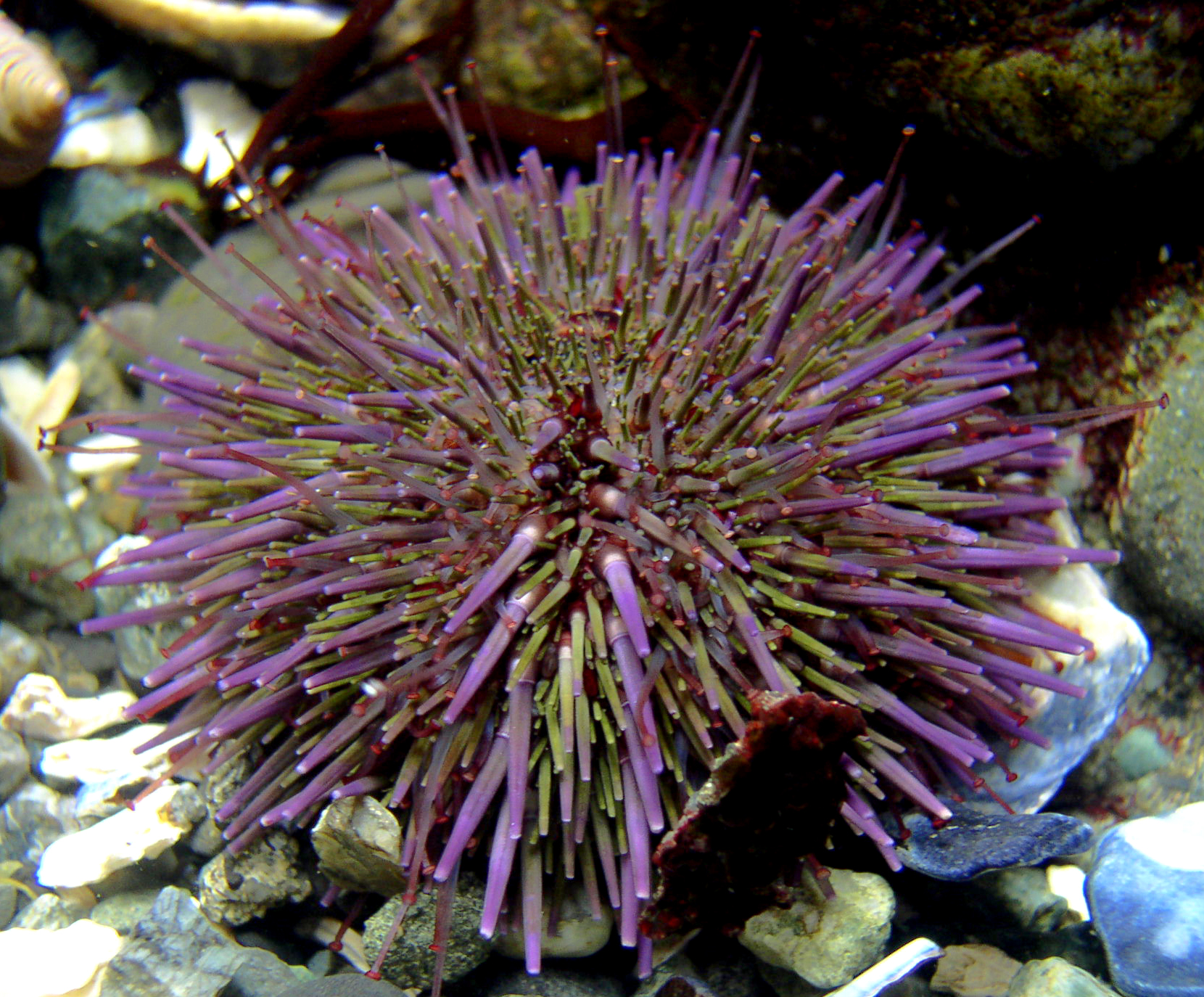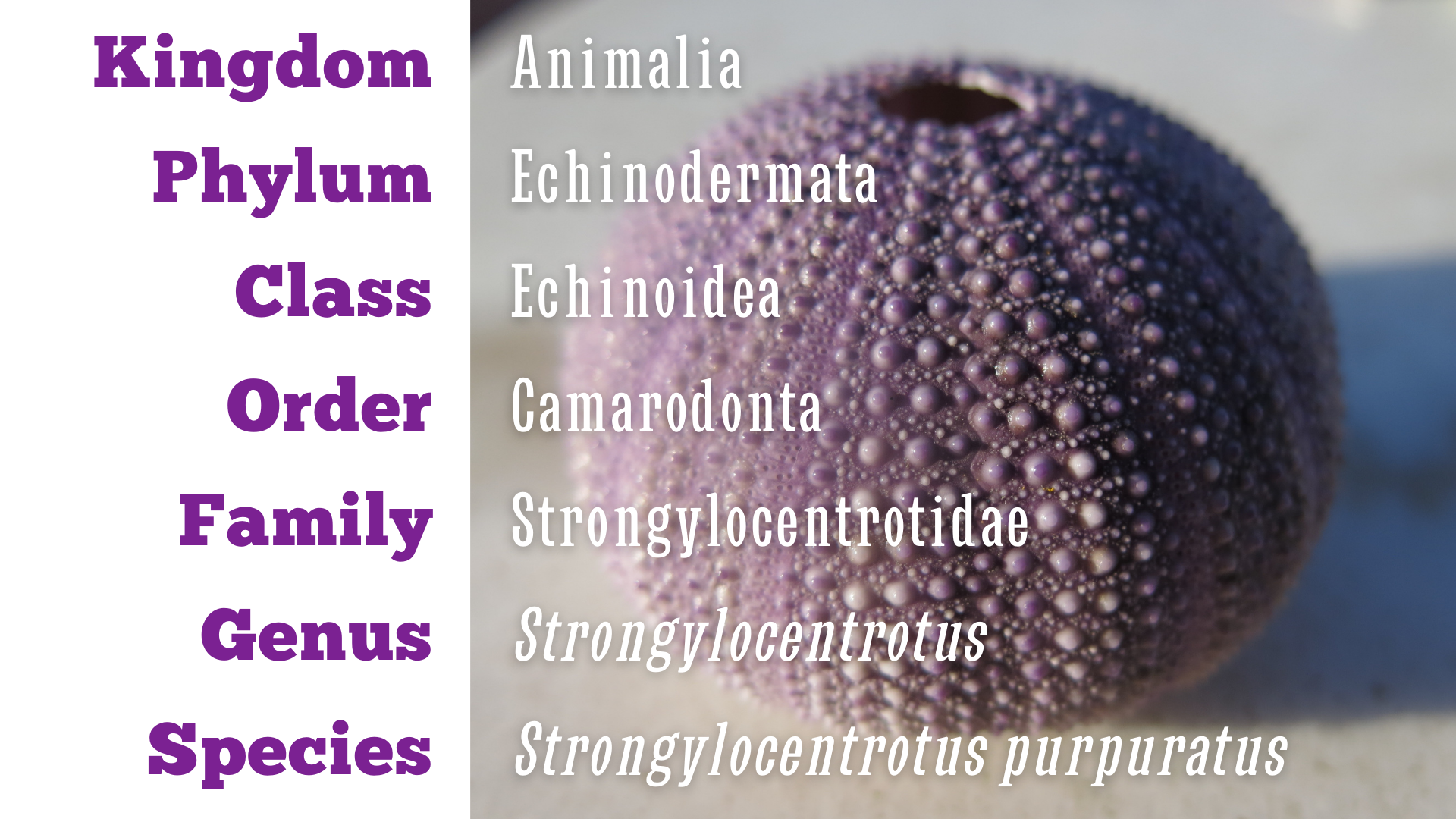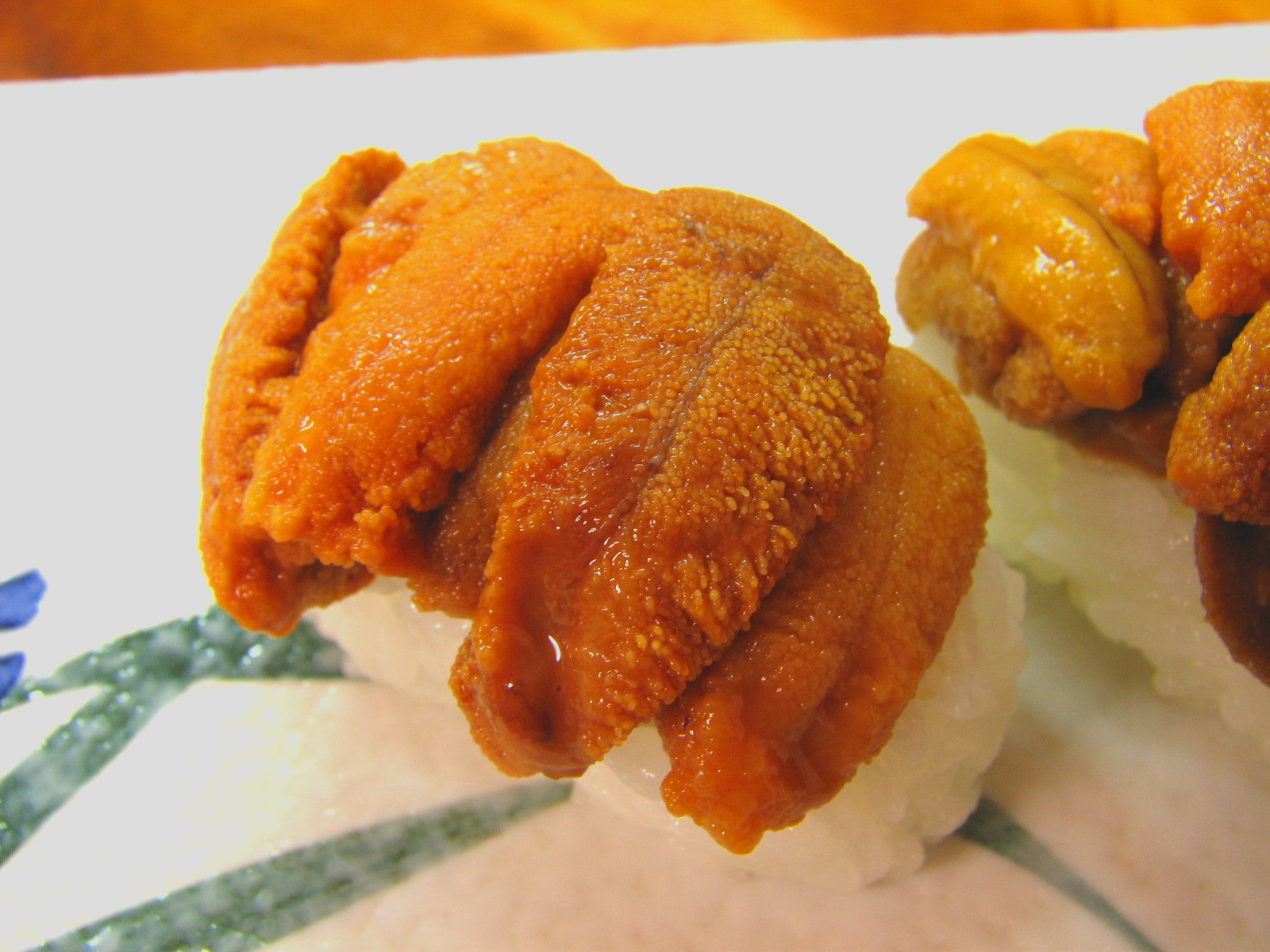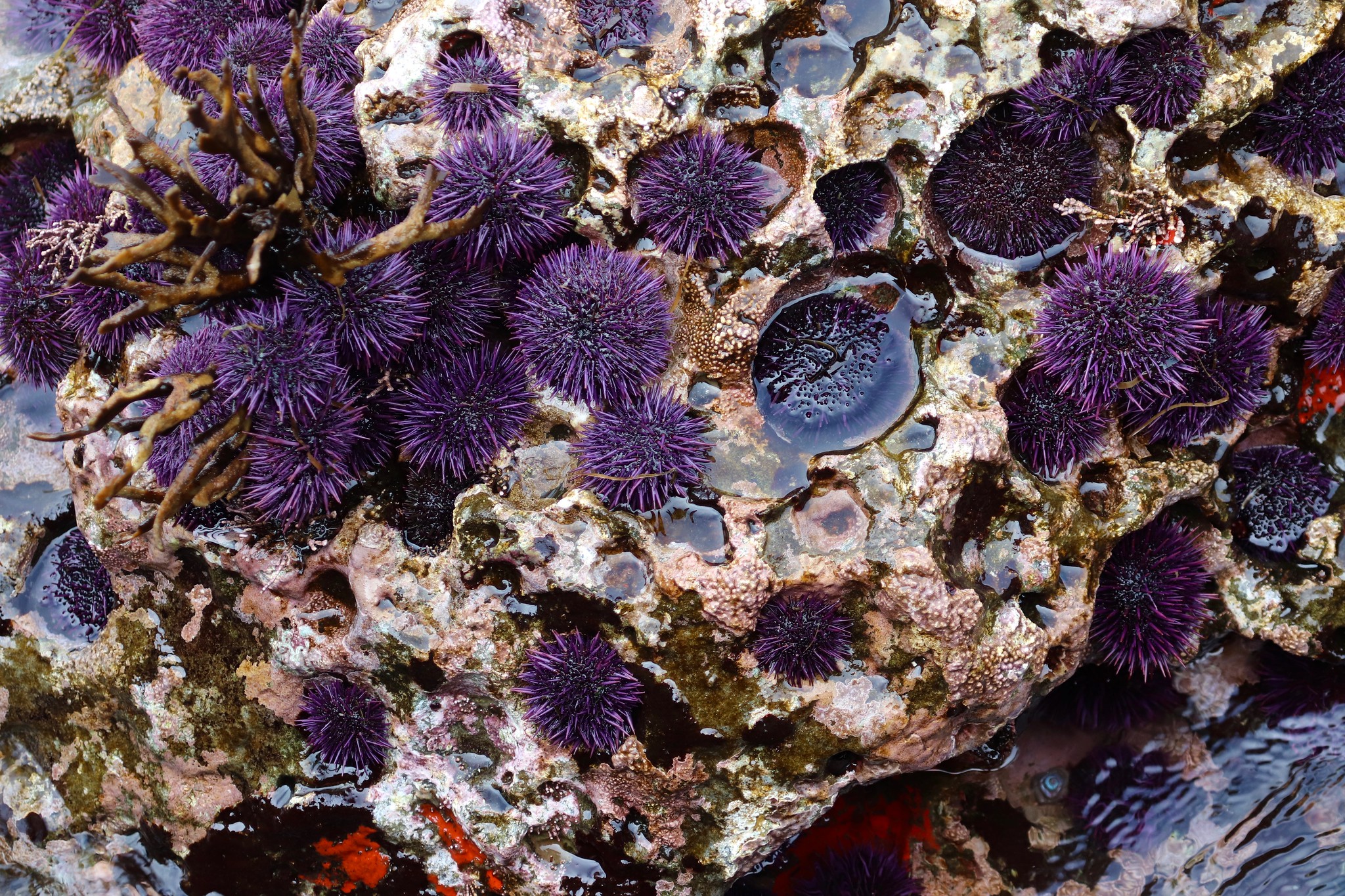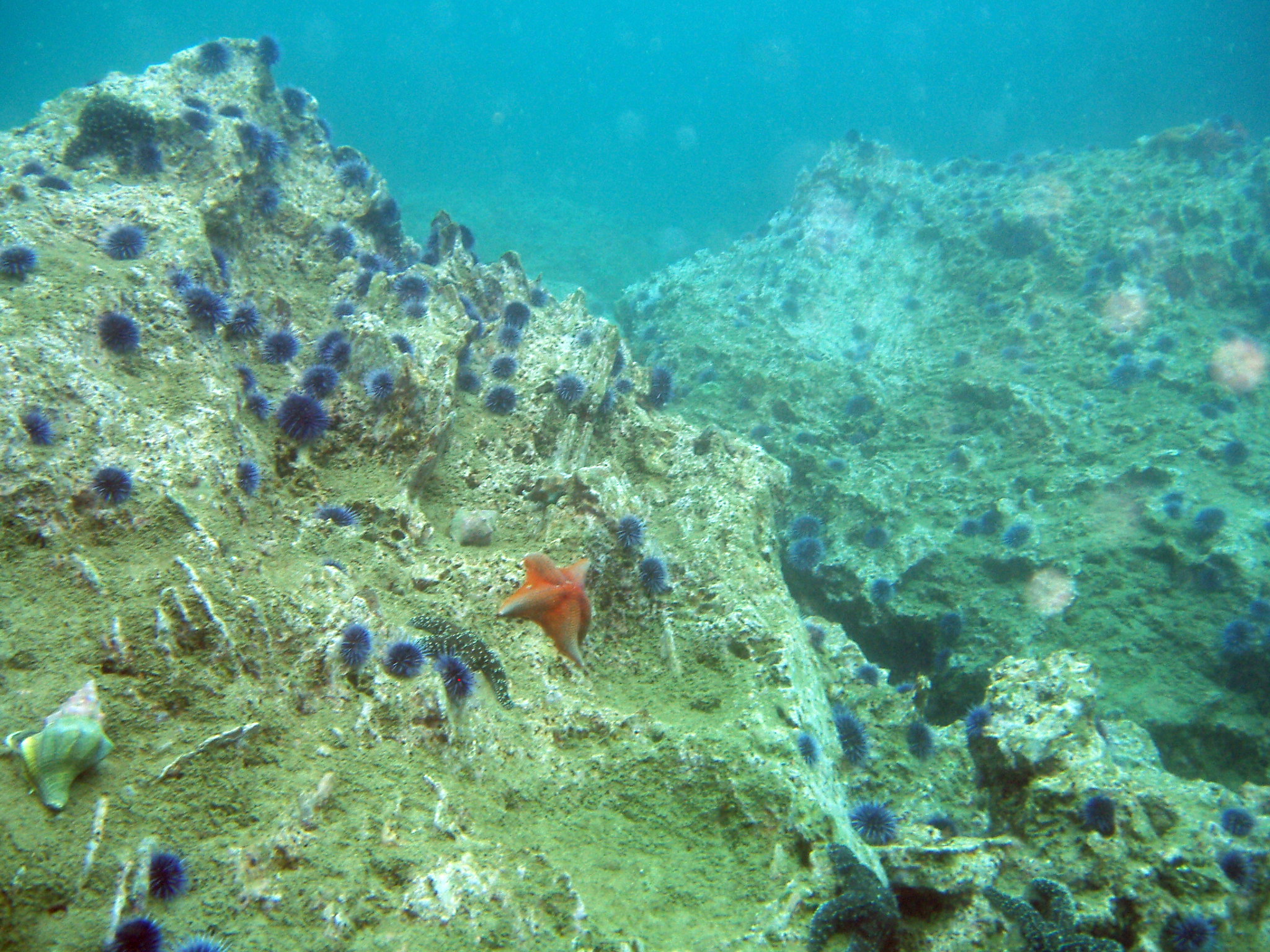Purple urchin with tube feet extended. Photo by Kurt L. Onthank, from Wikimedia Commons.
In May 2020, I wrote a Critter article about a slow return to pre-pandemic norms. I must have been measuring progress in “urchin speed,” because one year later, we’re still masked and distancing… but there are reasons to be hopeful.
I wanted to feature the purple urchin this month because:
- they gather in large numbers, like we hope to safely do again one day
- they are sharp and pokey, like vaccines
- they display genetic similarities to us, including amazing immune systems (more on that later)
Deep purple
Spine-tingling
Yum! Sea urchin
Point break
A gathering of purple urchins in a rocky tide pool. Some rest in depressions they have created. Photo by Roy Luck, from Flickr.
Spines might not always deter a hungry sea otter (or a human sushi-lover), but if all else fails, purple urchins can burrow into rocks with their sharp teeth and spines to create round burrows for protection. Digging through rock might break or wear down a few spines, but no biggie — the spines are continually replaced.
If the urchin isn’t careful, though, this safe haven can become a prison. A small urchin that stays in the depression too long will grow too large to escape it, and will remain trapped there for life.
Every rose has its thorn
Where has all the seaweed gone? An urchin barren now exists off the coast of Los Angeles where macroalgae like kelp once grew. Photo by Heal the Bay, from Creative Commons.
Speaking of depression… the success of purple urchins in the face of danger has made them key players — and maybe even the villains — in an ecological drama that is currently playing out on the west coast.
Spatial coverage of giant brown kelp (Macrocystis spp) is on the decline — a major problem for the many species these floating forests support (including orcas, seals and salmon). Kelp is also the preferred food source of the purple sea urchin. Normally, predators keep masses of urchins in check, but sea otter decline, sea star wasting syndrome, and a warming climate have all contributed to throwing things out of whack.
A horde of grazing purple urchins can destroy entire forests of kelp, leaving behind deserts called urchin barrens. While this is more of an issue off the California coast than it is in Puget Sound (because of the low numbers of urchins here), losing these magnificent and productive forests would surely have a profound impact on the entire coastal ecosystem.
Urchins — they’re just like us (sort of)!
Now that you hate urchins a little, let’s bring it back to a positive place. Besides being an important part of the (balanced) marine food web, purple urchins are highly valued for their significant contributions to science. They are used in many lab studies including fertilization and larval development, genetic analyses, and tests to determine the toxicity of pollutants.
In 2006, teams of scientists collaborated to sequence the complete purple urchin genome. They discovered unexpected similarities with our own genome that may one day shed light on how these strange creatures are related to us:
- they have about 23,500 genes (we have between 20,000 and 25,000)
- they can be very long-lived — upwards of 100 years
- they express genes similar to our vertebrate genes for vision — in their tube feet (!)
- they have the ability to adapt to handle future stress; for example, a mother urchin exposed to low pH (a characteristic of ocean acidification) can change her offspring’s genes while they are developing, giving them better tools for survival
Herd immunity
The similarity to the human genome doesn’t end there. For creatures that are basically walking pincushions, urchins have sophisticated immune systems. Mammals have adaptive immunity: your system “remembers” the pathogens you are exposed to in order to fight them off later (this is why vaccines work well on us humans and our furry friends). Most invertebrate immunity, however, is strictly innate, or built-in — they are born with genes that code to produce a certain set of germ-fighting proteins. This means that they can’t easily adapt to fight off unfamiliar bugs. Urchins have innate immunity, but ALSO the ability to adapt: their genes can code to combine their proteins in new ways to battle bacteria and other nasties in the water that they might not have encountered before.
Research on the purple urchin genome may ultimately lead to new treatments for human diseases, helping increase our resilience to future global challenges.
Critter of the Month
Dany is a benthic taxonomist, a scientist who identifies and counts the sediment-dwelling organisms in our samples as part of our Marine Sediment Monitoring Program. We track the numbers and types of species we see to detect changes over time and understand the health of Puget Sound.
Dany shares her discoveries by bringing us a benthic Critter of the Month. These posts will give you a peek into the life of Puget Sound’s least-known inhabitants. We’ll share details on identification, habitat, life history, and the role each critter plays in the sediment community. Can't get enough benthos? See photos from our Eyes Under Puget Sound collection on Flickr.


